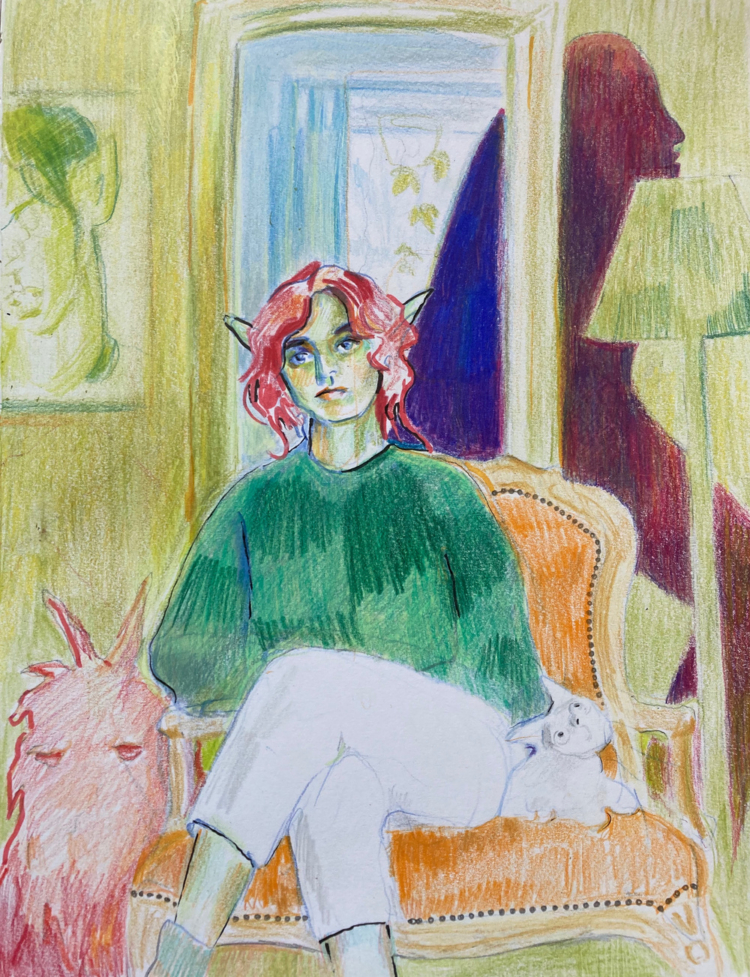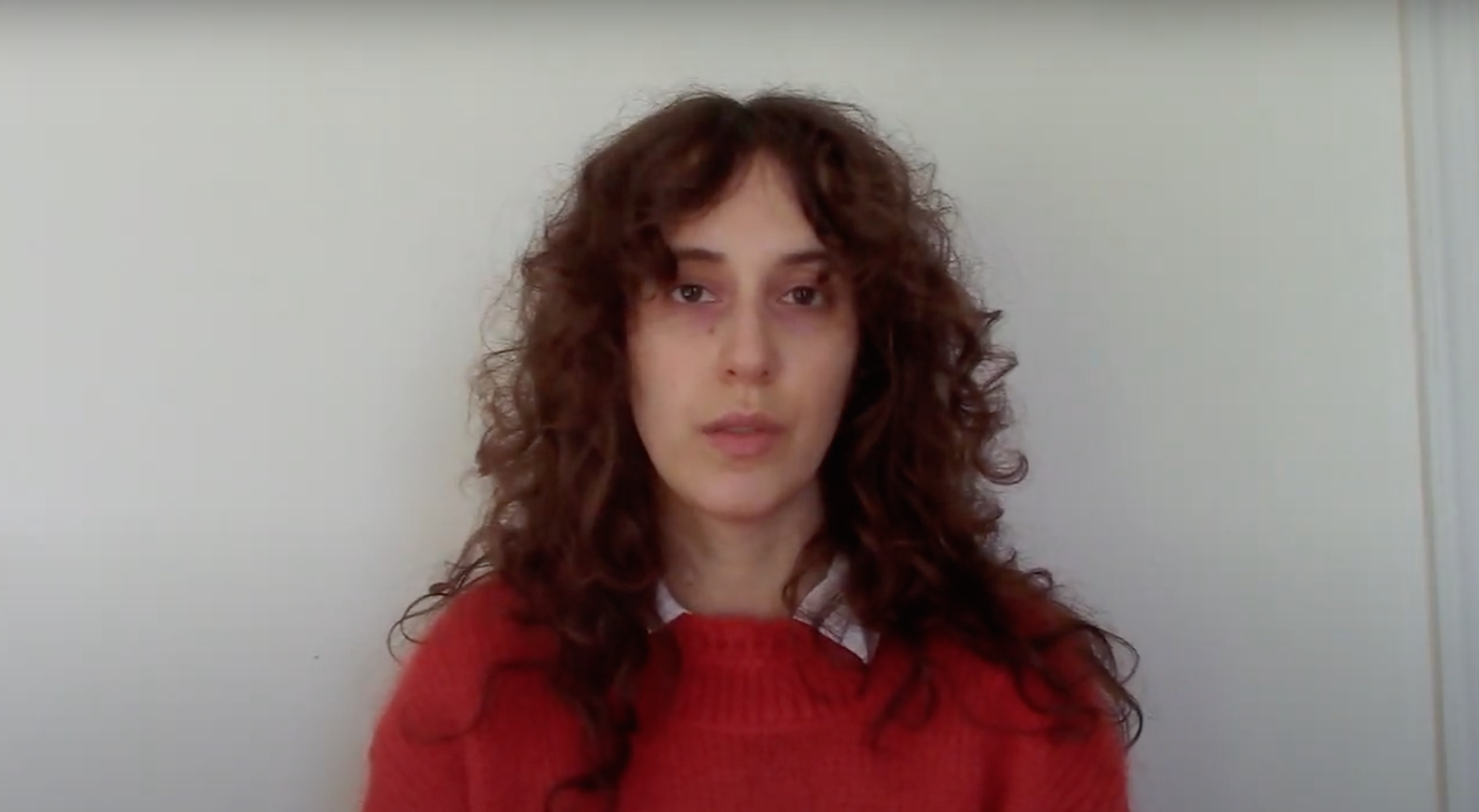Lillian Paige Walton’s collection of short stories, Meter-Wide Button, is a force — considering that most of these pieces initially came to her as creative exercises. I’m always infatuated by stories written by people who pick up fiction writing out of curiosity — usually there seems to be an assured deftness, confidence, and whimsy that isn’t burdened or beholden to a particular study or formal training. So is the case with Paige’s talent: it is innate and raw.
In Meter-Wide Button, the augural manuscript from Sapp Press, Paige takes her characters — many of whom are in creative fields themselves (Paige is also a visual artist, and teaches at a school in Brooklyn) — and places them in tense, unforgiving situations. “The room in which I write has no door, so it must be entered from below,” writes Paige in her opening story, “The Room in Which I Write.” “I enter with my head first, removing the small window of film that separates the room in which I write from the room in which I do not write.” Paige makes her characters sweat, and in turn, makes her readers sweat too. —JL
How long have you been working on these stories for, and were they always meant to live in this particular collection?
Some of the stories in Meter-Wide Button are some of the earliest stories I had ever written. Others, such as “Residency,” “Real Teacher,” and “Stairwell” are more recent. When writing the stories — especially the early ones — it hadn’t occurred to me how they might exist in a collection because I was only concerned with them as exercises in learning how to write. I came to writing from a visual arts background and didn’t start to consider fiction or prose to be part of my practice until about five years ago. The title story is the oldest example in the book. I started writing it on the first day of the new year in 2017 from a friend’s sofa.
When I was approached about putting together a collection of work, I went back through my archive and looked for common threads. During the organization of the collection, it felt as though things were missing, so I cut out a story and wrote two new pieces specifically with the intention of including them in the book. “The Room in Which I Write” was a key for the thematic content of the book and a sort of disclaimer for the reader. Moved to the front of the book, it felt like an introduction, a premonition. I thought about arranging the stories in the book in chronological order. Perhaps I wanted evidence in a sort of personal progression.
What comes first for you, the story or the character?
I’m hesitant to say that I start with a character because the word character implies a level of solidity or formation. Many of the stories in Meter-Wide Button began simply with a body in a space. The body was a vessel for a feeling or an idea before it became a character. For me, a character — and often the story — comes together as the body, a thought, or the feeling continues to simmer in an atmosphere. Plot is a loose reference point that I use to push past the discomfort of the initial phases of writing. I feel very little sense of obligation to strictly adhere to it as a work progresses. So many things come up as you write and you can’t predict what will happen. It’s comforting to have a map in your hands, even if it’s fake. I think stories work best when both story and characters bend to each other’s whims a little bit.
And when it comes to characters, what’s your process for developing them and pushing them into uncomfortable territories?
I’m interested in friction. How do individuals cope with a crack in their structure or an intrusion upon their comfort? I suppose some of the characters, like the teacher in “Real Teacher,” are simply unlucky people, but I do think that the discomfort that some of the other characters throughout the book experience is purely perspectival. The discomfort results from a particular inflexibility or repression, as in the case of “Residency.” Perhaps a psychoanalyst would offer that writing itself is an uncomfortable territory.
Many of your characters seem very aware of their bodies: how they smell, sweat, bleed, desire. Would you say the human form is a recurring theme in your work?
Absolutely! I think there is a lot of bodily drama both in this book and more broadly in my work. I like to play with the sense of smell because it’s so much a part of daily human experience, attraction and repulsion. I do, however, think that many of the character’s connection with their bodies in the context of this book is due to their varying degrees of isolation.
You’re especially great at dialogue. Do you follow any ground rules when you’re writing speaking parts to make sure they’re effective?
That’s very kind of you to say. I don’t really make any rules, but I hold myself to the standard to constantly revise. As the story progresses, I return to the dialogue to make sure it is consistent with the character’s behavior and that it supports the structure of the story. I infuse a lot of verbal exchanges between characters with observation, because this is what happens so often during communication. It’s not just words. It’s movement, hesitations, and so on. That said, I think the best dialogue uses clear and simple language.
I love how experimental your collection is. There’s flash fiction. There are stories with chapters. In your closing story, you have footnotes. When you begin a new story, do write with these different structures in mind?
No, not whatsoever. The form comes together later, for better or worse. The footnotes felt appropriate to use in the last story because there are all these alien acronyms and devices named after Fleetwood Mac songs. It felt okay to give the reader a nudge toward understanding via these formal footnotes. Particularly since the story already operates on this ridiculous logic. There are names like XXX Factor and DJ Massive X.
What are your favorite stories in the collection?
I like “Residency” and “Real Teacher.” Maybe this is a strange response, but I really love to read the work aloud and I think both stories lend themselves very well to that. I read fragments of both pieces at readings in 2019 and 2020 and think these early sharings really led to their development. I also have fond memories of the writing process for both of them.
I’m interested to know what it’s like to publish a book via an independent press. What was the easiest and the most challenging aspect of putting this out?
The easiest part of working with the publisher was the communication and the most challenging part for me was promoting the publication! Everything about the book felt like a mutual decision between my publishers and I, which I am very grateful for. It was a learning experience for all of us. I’ve heard of authors who work with big publishers who print their book with a cover they hate and there’s nothing they can do about it. As a visual control freak, that sounds like a nightmare to me. [Ed. note—the book’s cover is also by Paige!]
My publishers and I became very close during the publishing process, but perhaps that is the nature of publishing during a pandemic. We talk all of the time and I actively miss them when we are apart. They left flowers in my stairwell when my roommate tested positive for Covid. I can’t say this is true of all independent presses.
I’d love to know about the editing process with your editor, Ally Harris.
We did two rounds of edits to the book. It took about two months total and Ally had to move across the country during that process. Working with Ally, I found myself adding to the text as much as I was taking away, which I hadn’t expected. It’s so helpful to have someone who doesn’t look at your work regularly give you feedback on your work. I was also very excited to work with someone who worked predominantly in poetry. I wanted to look at every word as much as the text as a whole. Ally was wonderful and I am very grateful to Elaine Kahn for introducing us.
What is your next writing project?
I have a few new short works and one chapbook-length work that I would like to find homes for. I’m also writing another story that is getting quite long. It’s inspired by Apichatpong Weerasethakul’s movies and the character of “The Renderer” in James Purdy’s Narrow Rooms. I had originally started writing it with plans to include it in another collection, but it might become a full-length book.

You’re also an artist and educator — how do these other outlets inform your creative writing (and vice versa)?
I’m sure that my experience with visual art informs my writing practice in certain ways. Though I do try to challenge and avoid it, I do write from what I know. When I speak about my writing practice, I talk about writing through that lens because that’s the reference point that I have. Is putting words onto a page and trying to pull a story out of them a “painterly” thing to do? I don’t know. I know painters who have this same intuitive relationship to their medium, but I also know painters that have a very controlled, methodical process.
I think that when I first started writing, the fact that I saw myself as an artist gave me the freedom to take risks if only because I felt detached from a writing community or academic background. In the end, I really don’t think artists see things differently from the way that writers do, or can do something that writers can’t. It’s just an issue of what time you are willing to commit where.
When you work with very young children, I think you also strive to become a better self-editor. Teaching has confirmed my belief — beyond the realm of writing — that the best communication happens through carefully chosen words. I think because we have become accustomed to exchanging unprecedented quantities of information at rapid rates, we forget the value of silence and waiting.
